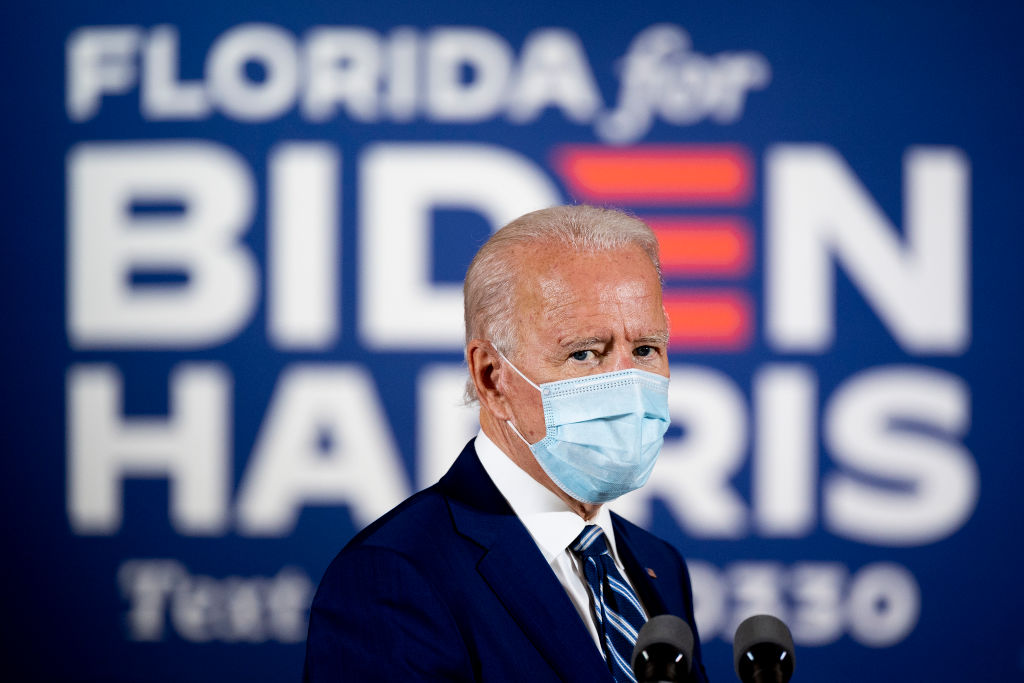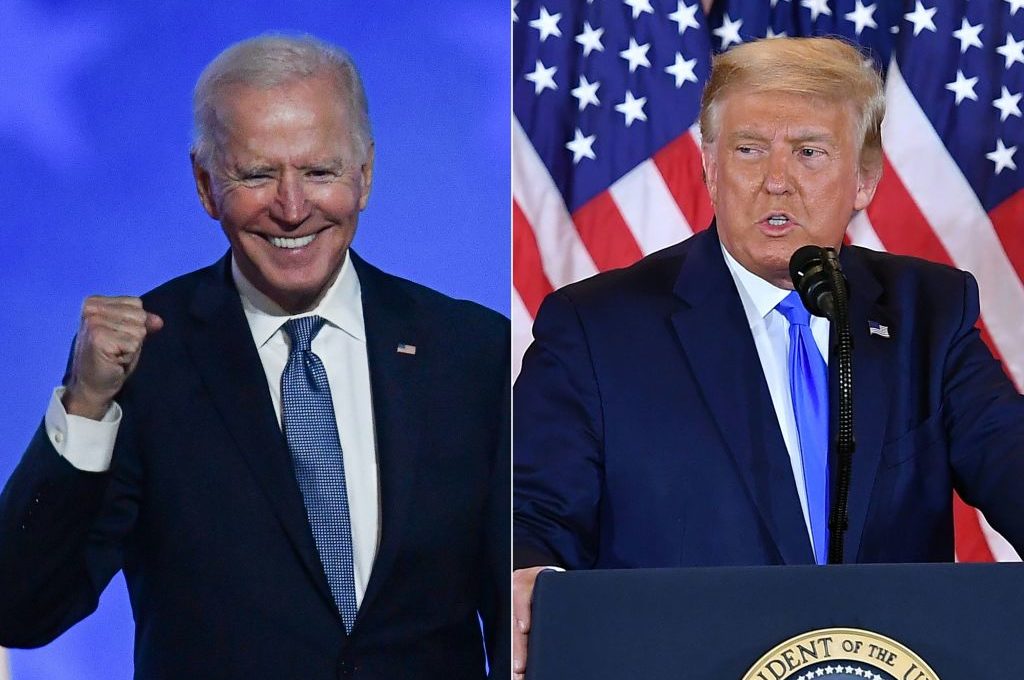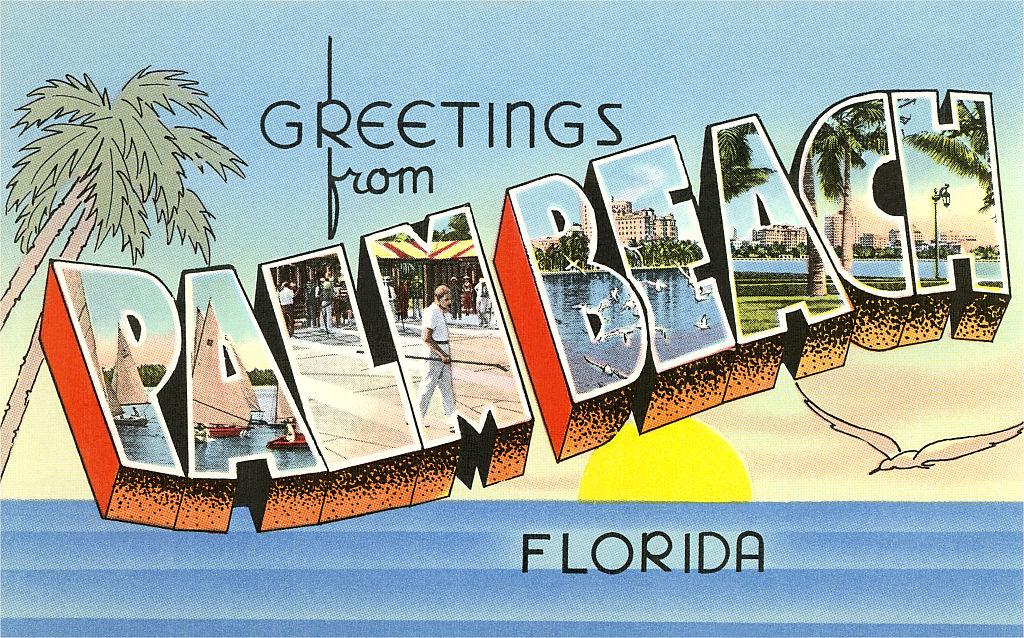As we get closer to Election Day, Democrats in swing states like Pennsylvania and Arizona are sounding notes of cautious optimism. Others, in Texas and Georgia, are daring to dream that Joe Biden’s national poll lead (mainly driven by suburban women) might flip those consistently red states to their column. In Florida, on the other hand, the mood is one of cautious pessimism. As it always is.
Democrats are still haunted by Al Gore’s loss in 2000, when the Supreme Court halted a recount in Florida, delivering the presidency to George W. Bush. In 2018, the polls showed that Democrats were on course to win Senate and gubernatorial candidates in Florida, but they lost both, by 0.1 and 0.4 points respectively. This ended up being the only Senate gain for Republicans in a purple state and the Democrats’ sixth consecutive loss of the Florida governor’s mansion.
Democrats’ problems may continue this year. A Bloomberg story, shared widely on Friday, reported that Democrats in Miami were not getting the resources they required to turn out the city’s Black and Latino communities to vote — echoing concerns felt ahead of their 2018 loss. Florida Democrats may cry wolf, but they are also often eaten.
Population growth usually goes hand in hand with political transformation; as we are seeing writ large in Texas, where the movement of millennials to cities like Dallas and Austin has turned the state from safely Republican to a real battleground. It might therefore be surprising that while the Florida population has grown by 74 percent since 1988, no presidential candidate has won the state by more than six points.
This apparent stability, however, belies incredible changes under the surface that have worked to help both parties in Florida. Figures from the US Census Bureau estimate that almost half of the state’s population growth since 2010 (46 percent) has come from those aged 65 and over. Many of these are wealthy conservatives living in states like Michigan and Ohio, looking to retire somewhere warm. A day or two’s drive down Interstate 75 will land them in the Villages or Fort Myers, on Florida’s Gulf Coast, two of the fastest-growing metropolitan areas in America. A friend who grew up in Fort Myers told me that while the area had always had a conservative hue, these newcomers were shifting it further right: ‘it’s QAnon territory now’.
But demographic change hasn’t just helped Republicans. In an almost mirror reflection, figures from the Pew Research Center show that Latinos also made up 53 percent of Florida’s population growth from 2010 to 2019. While the Cubans who settled in Miami have been loyal to the Republican party since Kennedy’s Bay of Pigs debacle, the more recent arrivals are from other parts of Latin America and the Caribbean. Thousands of Puerto Ricans, fleeing devastating hurricanes, chose to make Florida their home over the past decade. In the Orlando metro area, in particular, the community has grown by 34 percent and trends heavily Democratic, helping to shift the ‘I-4 corridor’ significantly to the left.
This year, there are additional countervailing forces working in each candidate’s favor. The ‘gray revolt’ against President Trump over his handling of the pandemic has been clear to see. According to Florida exit polls in 2016, Trump led Hillary Clinton by 17 points among the over 65s, but a Monmouth poll released on Thursday showed that lead has been cut to just four points. Given the high turnout rates of retirees, this alone should be enough to deliver the state for Joe Biden.
However, over recent years, Florida Republicans have made a concerted pitch to win Latino voters, who they lost by 27 points to Hillary Clinton in 2016. The old campaign pitch which referred to immigrants as ‘bad hombres’ has been replaced with a relentless attempt to paint the Democrats as ‘socialists’ — exactly the kind of dangerous radicals many Cubans, Venezuelans and others fled their country from.
Some have also suggested that Donald Trump embodies the kind of vigorous machismo many Latino men admire in a leader. Democrats have attempted to counter this, deploying endorsements from the likes of anti-communist intellectual and Cuban exile Carlos Alberto Montaner in recent Spanish language TV spots. The most recent polls of Florida Latinos put Biden’s lead at anywhere between 5 and 13 points — a significant fall from Hillary Clinton’s margin.
[special_offer]
Florida Republicans, with full control of state government since 1998 and far more local officials, have long been seen as having a slicker operation than the Democrats. The pandemic has widened this gap. While Democrats have been less willing to knock on doors to register and turn out voters in person, Republicans have pressed on. This will likely prove a particular problem for Democrats in organizing and motivating the Puerto Rican vote, who already have far lower turnout rates than more established Cuban Republicans. Barack Obama, the only Democrat to have won the state twice since Franklin D. Roosevelt, is heading back to Florida today for the third time in 10 days, in an effort to get Democrats to show up.
When all is said and done, Florida matters more to Donald Trump than Joe Biden. No Republican has won the presidency without it since 1924 — while the Democrats can find numerous routes to the magic 270 electoral votes without it. But Florida is one of a few swing states where we can expect an almost complete result on Tuesday night. For Joe Biden, winning its 29 votes could be the knockout blow he needs to prevent the election being dragged out for days, weeks and even into the courts.
Given Hillary Clinton lost the state by just 1.2 points, this task should be straightforward for a candidate with a large national poll lead. But like everything for Democrats in Florida, the result hangs in the balance.
This article was originally published onThe Spectator’s UK website.

























